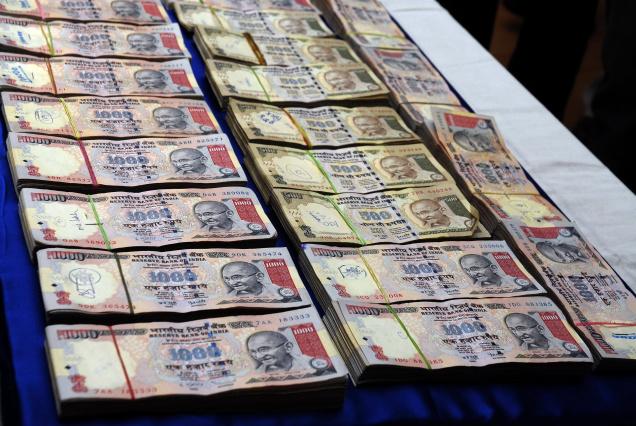 By NEHA THIRANI BAGRI
By NEHA THIRANI BAGRI
Divyakant Solanki/European Pressphoto Agency The Shakti Mills compound, the site where a young photojournalist was gang raped on Thursday, in Mumbai, Maharashtra.
A female photographer with an English language magazine was raped by
five men in Mumbai Thursday evening, undercutting Mumbai’s image as the
rare Indian city where women can safely move about in public spaces. The assault echoed the gang rape and murder of a woman in New Delhi in December, which set off an unprecedented wave of protests.
The woman, 22, arrived at the abandoned, desolate compound of Shakti Mills, a defunct textile factory, around 6 p.m., accompanied by a male colleague. She was taking photographs of the area, now a trendy hub for media and advertising companies, for a magazine article about Mumbai’s chawls, or tenements for workers who were once employed in the mills.
Under Indian law, the authorities are not permitted to release the name of a rape victim or, in this case, the name of her employer.
The authorities said that five men accosted and assaulted the two journalists inside the compound. The male journalist was tied up and beaten before the young woman was raped.
“There were five men in total, though it is as yet unclear whether they were all involved in raping the girl,” Satyapal Singh, the Mumbai police commissioner, said. “They tied the hands of her colleague using a belt and they hit him with a belt, but he was not severely injured.”
Doctors at Jaslok Hospital, where the woman was brought on Thursday evening, said that she had suffered external and internal injuries but that she was expected to make a full recovery. “As of now, she is stable and Jaslok Hospital is doing its best,” Dr. Tarang Gianchandani, a hospital administrator, said in a statement.
On Friday morning, in an unusually rapid response, the Mumbai police arrested one of the five attackers, and the police said they had identified the others.
“One of the five has been arrested and he admitted he was there along with some others,” Mr. Singh said at a news conference Friday afternoon. The police have released sketches of the five men, based on the woman’s report.
The five attackers are in their early 20s and live in an area near the abandoned textile mill, Mr. Singh said. Two of them have criminal records, he said. The police have not released their names.
After the December attack, in which a physiotherapy student was gang-raped and beaten to death and her male friend severely beaten, tens of thousands protested for weeks, demanding a safer environment for women and heavier penalties for sexual assault. In March, India revised its colonial-era laws on sexual assault, imposing heavier punishments for violence against women and designating stalking and voyeurism as criminal offenses.
Under the new laws, the suspects will be subject to a minimum punishment of 20 years and a maximum of life imprisonment, if convicted.
While Mumbai, India’s financial capital, is widely considered one of the country’s safest cities, recent events have brought that into question. According to statistics from the Praja Foundation, a nonprofit organization in Mumbai, 207 rape cases were registered in the city in 2011 and 2012, a 15 percent increase over 2010. The number of reported rapes nationwide is widely believed to be much lower than the actual number.
 Rafiq Maqbool/Associated Press Indian activists in Mumbai on Friday protested the gang rape of a young photographer.
Rafiq Maqbool/Associated Press Indian activists in Mumbai on Friday protested the gang rape of a young photographer.On Friday, R.R. Patil, the home minister of Maharashtra state, of which Mumbai is the capital, told the Indian news media that female journalists reporting from isolated areas would be provided police protection, an idea that did not go over well with some.
“As a journalist, I should have the freedom to report from where I want, at par with my male colleagues,” Deepti Sachdeva, a reporter with the Times Now television network, posted on Twitter.
Gurbir Singh, an editor at BusinessWorld magazine, accused the Mumbai police of failing to clean up abandoned buildings and prevent them from becoming safe houses for criminals. “The mill in question had been lying abandoned for some years and had become a center for drug abuse, the sale of illicit liquor and all sorts of criminal activities, and the police were aware of this,” Mr. Singh said.












 Mumbai,
Aug 24 : India's foreign exchange (forex) reserves increased by $205.8
million to $278.80 billion for the week ended Aug 16, according to data
released by the Reserve Bank of India (RBI).
Mumbai,
Aug 24 : India's foreign exchange (forex) reserves increased by $205.8
million to $278.80 billion for the week ended Aug 16, according to data
released by the Reserve Bank of India (RBI).


















